Call Us Now! 352-577-8229


Everyone knows that rodents in their home is a problem, but most people are unaware that a rodent infestation could cost them their home and their health! Premier Wildlife Services is here to help with our complete rodent control service. Call or text us today to get fast, effective rodent control.
There are actually four rodents we see the most here in Gainesville Florida, but we will only cover two of them on this page. Click these links to see our Mouse Control and Squirrel Control information pages.
We will cover the Brown Rat (Rattus norvegicus) first. The brown rat is more commonly known as the Norway rat, sewer rat, or wharf rat. Brown rats are one of the largest rats, averaging around 10 inches long with the tail an additional 10 inches long. The brown rat weighs in at 1 pound on average. Brown rats are typically brown or dark grey, with a light grey or brown belly.
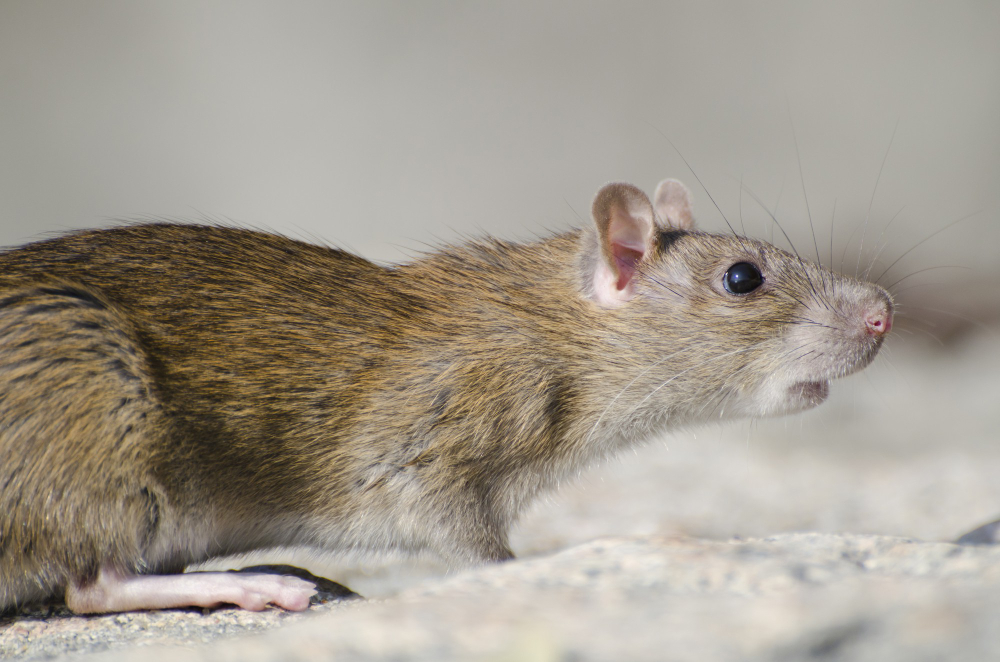
Brown rats are mostly nocturnal, but they may be active in the day if the population gets high. The brown rat can climb, but they are typically found close to the ground. Brown rats prefer to be closer to people but will often make nests beneath buildings by burrowing under them. Brown rats are omnivores. They prefer to eat grains and fruit, but they will eat anything including items found household garbage.
Black rats are omnivores and mostly eat seeds, fruits, and other vegetation. They eat approximately .53 oz of food per day and drink about .51 oz of water per day. Black rats have a particular love for human and pet food which is one reason why they can be such a difficult pest to control. The black rat likes being higher up than the brown rat and is usually found inside homes, especially in attics.
Brown rats reproduce year round. They typically have about 3 litters or more each year with 5-8 babies per litter. The black rat is reproductively mature around three months. This is why rodent populations increase extremely quickly and become a major problem.
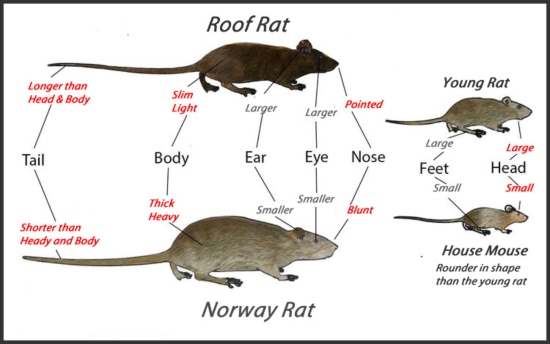
Rats can carry over 35 diseases. These disease are mostly spread through contact with rat droppings, urine, saliva, and even nesting material. We will briefly cover the top 6 diseases rats most often carry.

this is caused by the bacteria called Streptobacillus. This is found in the upper respiratory tracts and mouths of rats that appear healthy. Infection occurs from rat bites or scratches, or from contact with rodents. Infection can also occur from eating food or drinking drinks that have been contaminated by rodents and/or their droppings. Although rat bite fever can be deadly, it is easily treated with antibiotics.

this is a viral infection that is found in rats that appear healthy. Infection occurs through contact with rat urine, droppings, saliva, and nesting material. This virus is relatively mild, but is extremely dangerous to pregnant women due to associated birth defects and even fetal death.

this is caused by the bacteria called Leptospira. Infection occurs through contact with food, water, and nesting material that has been contaminated by urine from an infected rat. Leptospirosis can be life-threatening, but many people experience only mild symptoms.

this is caused by the bacteria Salmonella. This is commonly found in the droppings of rats that appear healthy. Infection occurs through contact with rodent droppings. Infection can also occur from eating or drinking food or drinks contaminated by rodents and/or their droppings.

this is a viral infection that is found in rats. Infection occurs when you breath dust from rodent droppings, urine, or saliva.

Rabies is uncommon in rats, but it is still a concern. Infection occurs from rat bites. Rat bites must be treated by a health care provider immediately.
A study conducted by The Johns Hopkins University showed that people residing in homes with a rodent problem have a significantly increased risk of developing allergies, asthma, and severe respiratory illnesses.
The same study also showed that removing the rodents alone will not eliminate these risks. The affected area must be properly sanitized to eliminate the health risks associated with the rodents. Attic sanitation is extremely important due to the close proximity to ac duct work and risk of airborne particles being introduced into living spaces below.
Cleaning up the mess rats leave behind is very serious. Please see our page on attic restoration to learn more.
Rats can squeeze through a hole as small as a half dollar. If there are any gaps or holes outside your home that are that size, they will find them. There are hundreds of places we look when trying to determine where rodents are getting in. Here is the top 10 places we see rats using to get into a house.
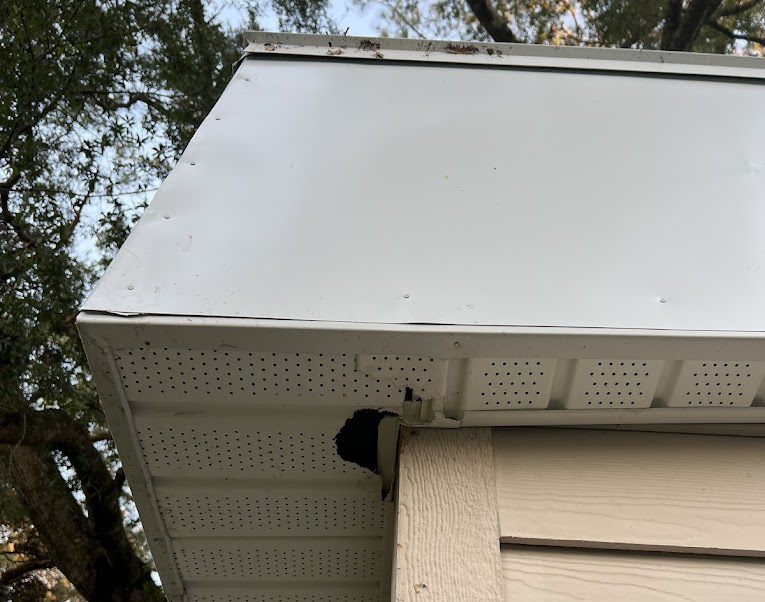
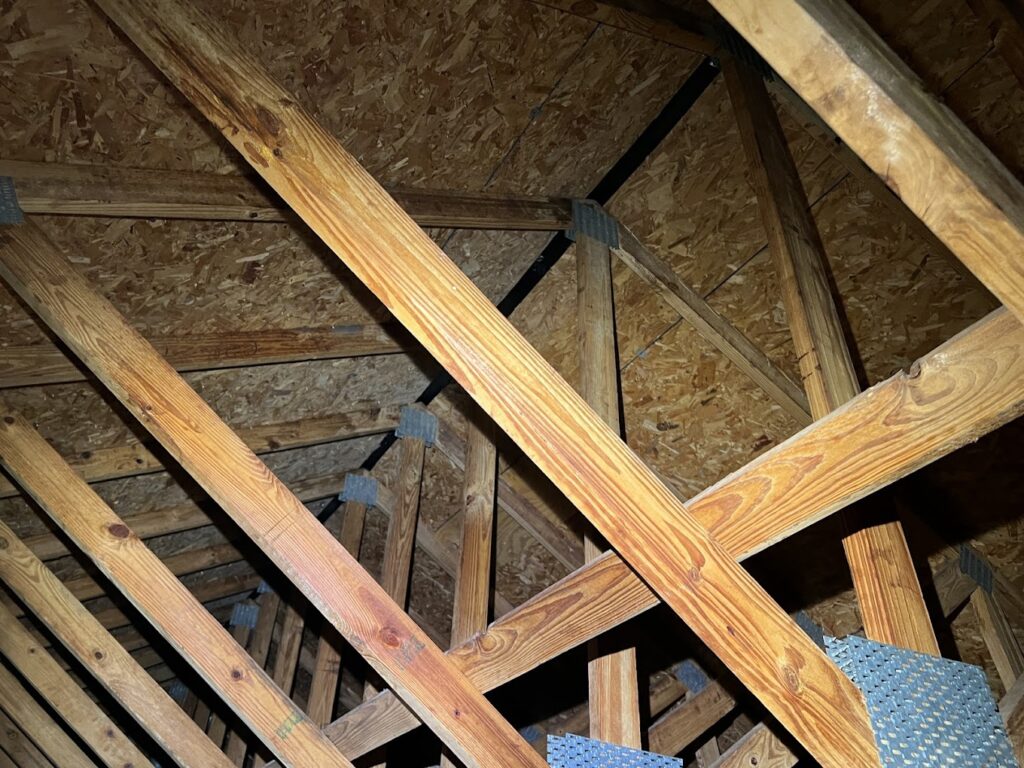
Rats cost the United States over $1 billion in property damage and cause over 25,000 house fires every year. This doesn’t include the food that has to be thrown out due to rat contamination. But how does such a small animal cause so much damage?
Rodents are extremely destructive because they must constantly chew on things to wear down their front teeth. This makes your home’s plumbing, wiring, and wood beams the rats primary targets. The damage rats cause to these elements of your home can be costly to remedy as well as extremely dangerous if left un-repaired.
Rodents are extremely destructive because they must constantly chew on things to wear down their front teeth. This makes your home’s plumbing, wiring, and wood beams the rats primary targets. The damage rats cause to these elements of your home can be costly to remedy as well as extremely dangerous if left un-repaired.
Rats also love to poke holes in air conditioning duct work. This is extremely problematic because this will cause the contaminated dust particles from your attic to be sucked into the air conditioning ducts and pumped into your house. This means that even if you’re not crawling through your rat contaminated attic, you may still be exposed to all the dangerous bacteria and virus those rats may carry.
Rats are also extremely destructive because they are so unsanitary. Rats urinate and defecate where they walk. We have seen hundreds of attics with insulation that has had to be completely removed and replaced due to the level of contamination.
One of the scariest things about rat damage is that the longer you wait to fix the problem, the worse it gets. The rats will continue to use your home as their personal toilet and they will continue to gnaw on everything in their sight. If you think you have a rodent problem, don’t wait any longer! Call Premier Wildlife Services today for your free inspection.
The best way to control rats is by using snap traps. Snap traps are the simplest and most effective way to get rats under control fast. Determining where to place the snap traps is probably the most crucial part of successfully trapping rats. Choosing the right size snap trap and bait is important as well, but if the trap isn’t placed where the rats are, you will not trap the rats.
We use the tried and true victor snap traps, usually the ones with the yellow trigger pad. The copper trigger pads work well to, but the larger yellow pad works best. We will typically use peanut butter as the bait. Every now and again we will use something different, but usually, peanut butter works best.
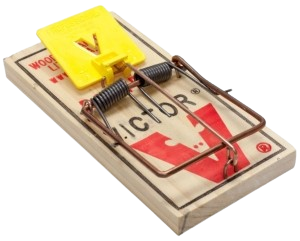
We look for the common routes the rats use. You’ll find them very easily in the attic because the insulation will be trampled down and there will be droppings on the trail. We find that placing the traps perpendicular to these routes so the rats have to cross the trigger pads gets the most rats the quickest.
We don’t worry about the rodents smelling us on the traps. They aren’t afraid of humans enough to stay out of our homes so they won’t care if they smell us on the traps. It is not unusual to not catch any rats for the first few days. They sometimes get “trap shy” and will stay away from something new thing in their environment. Don’t worry though, that doesn’t last long.
Another critical part of controlling rodents is to make sure the only food source they have is what is on the trap. Keep all food in tightly sealed plastic or metal containers. Clean up any spilled food and wash dishes and utensils once you are finished using them. Make sure all food is put away each night and empty any pet food and water bowls.
Removing any possible rodent nesting sites from the outside of the home is also very helpful. Try to keep firewood piles, and garbage cans as far away from the home as possible. Keeping grass and shrubs near the home well-trimmed will also help keep rodents out.
The foolproof way to keep rats from coming back is by installing quality exclusion barriers and proper preventative maintenance. If you go through all the effort of trapping the rats in your attic, but never seal up the exterior, new rats will quickly find your home and move in. That’s also why you need a preventive maintenance plan. If the rodent populations in your area are high enough that rats moved into your attic, new rats will continue to try unless you slow down the population.
Since no two entry points are exactly the same, a one size fits all approach to sealing up a home just won’t work. Our exclusion barriers are all custom made so they fit right each time. We use only high quality stainless steel, galvanized, or plastic products. The better the initial products are, the longer they will last, the better they will work, and the better they will look.
Your home is special and the exclusion barriers shouldn’t change that. We work hard to make sure our exclusion barriers blend in naturally with your home. Our goal is for no one to ever know you had a rat problem.

The most often neglected part of rodent control is prevention. Once the rats have been trapped and the structure has been properly sealed, we place specialized boxes around your home that safely reduce the remaining rodent population around your home. These boxes allow us to monitor and reduce the remaining rat population. These boxes are 100% safe, tamper resistant, and anchored to the ground. This is a integral part of the rodent control process.
For more information on the exclusion process, please see our exclusion page.
It typically takes 1-3 weeks to get 100% control of a rat infestation. This can vary due to the severity of the infestation, the exclusion barriers required to seal the home, weather, scheduling, and accessibility to the property.
Here are the steps in the average rodent control process:

This step takes some time. We start with a complete interior inspection of the home. If you have seen rats inside, this is the time to show us where. We will go into the attic and inspect for any signs of rodent activity. We will look for droppings, grease marks, trails in the insulation, and nesting materials. We will photograph any signs of rodents we find. Next we will go outside and walk around the exterior. We look for things like loose soffit, holes in the siding, and open plumbing and electrical entrances. Next we will climb up on your roof and inspecting on photographing any potential rat entry points. We will also measure the entry points so custom exclusion barriers can be made. We will then prepare your personalized wildlife control plan. We list everything we found and determine the best course of action to eliminate your rat problem. We will sit down with you and explain our findings and answer any questions you may have.

We set traps in the areas that have signs of rodent activity. We then begin the exclusion process. Depending on the severity, this can take anywhere from a day or two on average. In most cases, there is some exclusion work that is done from the inside. We will schedule this at a time that is convienent for you. You can be home for the exterior exclusion, but it is not required.

Once the exclusion work is complete, we have to finish trapping. We will continue to monitor the traps until there are no longer signs of rodent activity. This doesn’t usually take long since once the exclusion work is completed, the rats won’t have access to food and water other than what’s on the trap. Once we have confirmed there are no more rats in your attic, we will move on to cleaning up the mass from the rat infestation.
Once all the rodents have been trapped and removed, the affected area needs to be thoroughly sanitized. Our attic sanitizing process uses all natural organic enzymes that break down urine, pheromones, body oils, and small amounts of rodent feces. We can also treat for fleas, lice, mites, ticks, and other parasites brought in by rodents as needed.
After the attic has been sanitized, we can complete any attic restoration needed. Attic restoration can include repairs to the flexible ac duct work, kitchen and bath vent lines, and adding any protective insulation needed to chewed wiring. In some cases, the insulation has been severely damaged and may need to be replaced. This damage can include over compaction, and general contamination from rodent urine and feces.
For more information on how to clean up a rat infestation, please see our sanitation and restoration page.
Our attic sanitizing process uses an all-natural organic enzymes formula that breaks down urine, pheromones, body oils, and very small amounts of rodent feces. We also treat for fleas, lice, mites, ticks, and other parasites brought in by rodents. This product contains no harsh products and is completely biodegradable.
This can vary drastically from home to home. Factors like the level of rat infestation, type and quantity of exclusion barriers needed, and the level of decontamination and restoration needed. Unlike other companies that charge by the square foot or based on your zip code.
We start with an onsite inspection. We will go on your roof, into the attic, and inspect the entire interior and exterior of your home. Once we have assessed the problems, we will put together a custom rodent control plan for your home. We will sit down with you and review our findings and show you photos of the issues found. We will review the detailed written quote with you and answer any questions you may have.
All of our prices are all-inclusive and easy to understand. We don’t add hidden fees, up charges, or surcharges. We treat you like we want to be treated.
Yes! All of our services come with our 100% Satisfaction Guarantee. We also offer our Lifetime Warranty on all our exclusion services. This is the best warranty in the industry. It’s simple, if the rats come back, so do we at no additional charge. All you have to do is call or email us. No other rodent control company offers this warranty.

Premier Pest & Wildlife Control can quickly and permanently control rodents inside your home. We offer a Lifetime Warranty on all rodent control services.